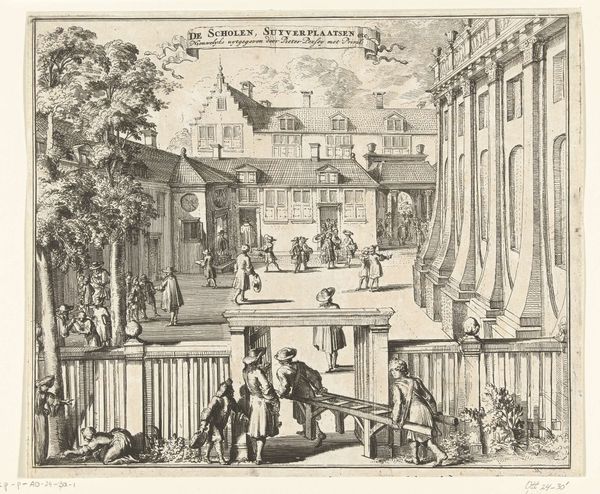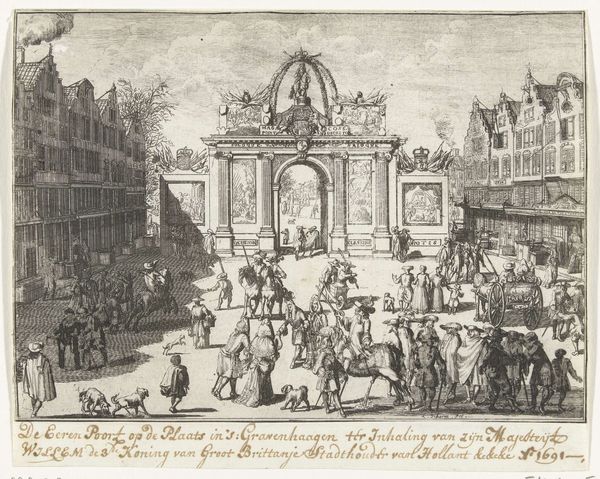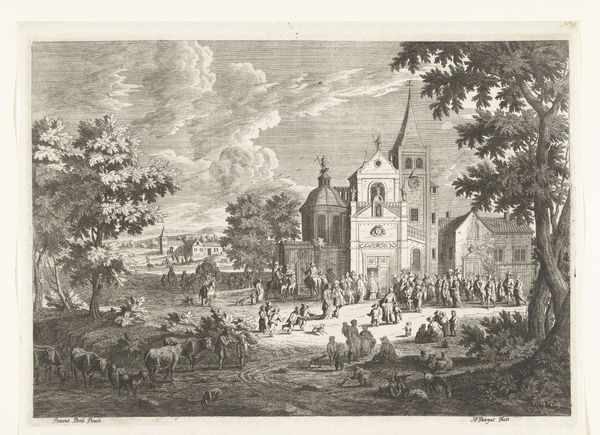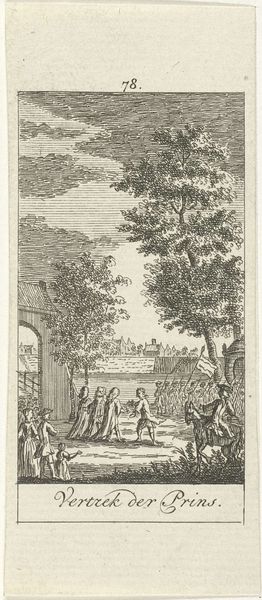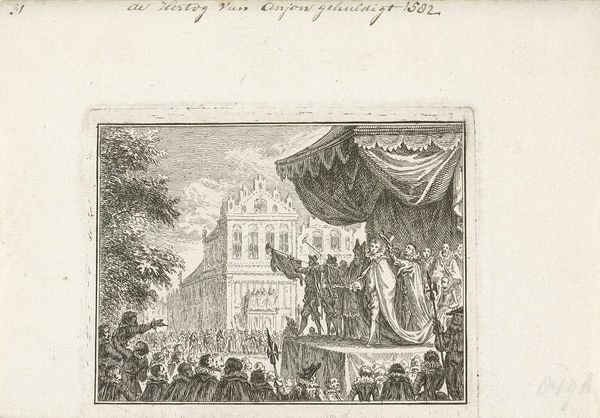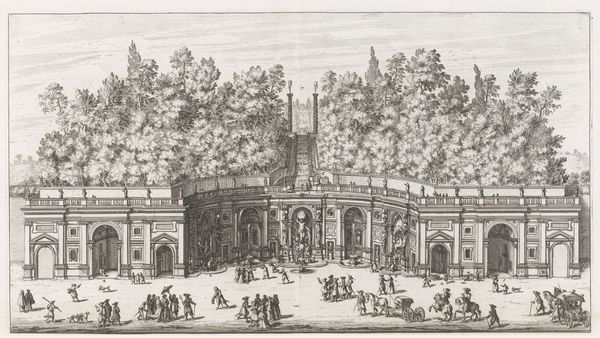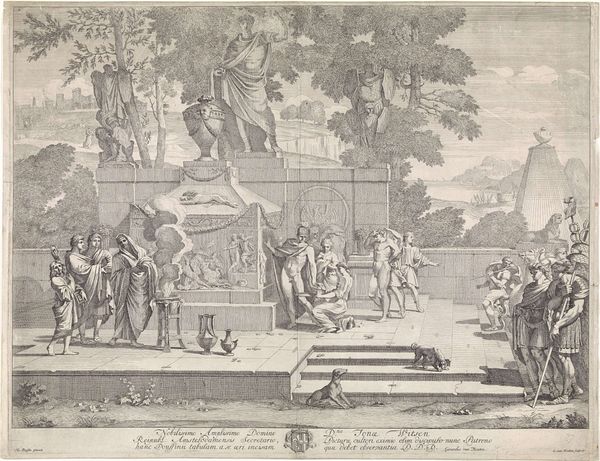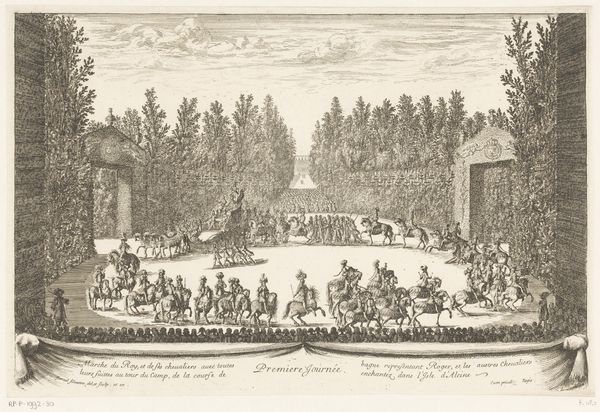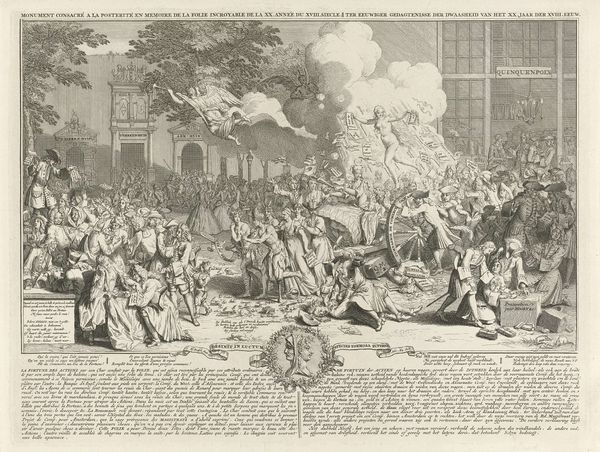
print, engraving
#
narrative-art
#
dutch-golden-age
# print
#
cityscape
#
genre-painting
#
engraving
Dimensions: height 167 mm, width 196 mm
Copyright: Rijks Museum: Open Domain
Curator: Look at this flurry of chaos captured in ink! It’s a 1777 engraving by Simon Fokke, depicting the “Plundering of the House of A.M. van Arssen in Amsterdam, 1748." Editor: Wow, a dark comedy etched in meticulous detail. Furniture is literally flying out of the windows! The mood is… vengeful glee? Curator: Absolutely. There's so much being communicated with this image. Those Dutch houses are sturdy symbols, usually, but here they're under siege. Editor: I can see that. Look at the repetition of overturned furniture, almost as if symbolizing a cascade of misfortune. Then note those shadowy figures hauling away valuables versus the crowd just taking in the destruction, almost like a festival. So who exactly was A.M. van Arssen? Curator: He was a tax collector whose house was targeted by an angry mob during unrest in 1748. The piece has to say something about cultural memory. The broken symbols become an emotional shorthand of what that chaos felt like. It is an old story about economic inequality and collective vengeance. Editor: See, that brings an element of political theater into it for me. The crowd isn't just looting; they’re performing a symbolic destruction of wealth and power. It’s not a riot, it's a re-writing of power dynamics as it’s being filmed, just like something we see in the 21st century. Curator: I completely agree! The precision of the engraving gives it a weird feeling. The fact it can recreate an overwhelming event with just fine lines shows a mastery. It’s so orderly, and the real-life scene it pictures would be messy, visceral. What’s interesting about focusing on the image and the idea, instead of a real situation is its accessibility; It takes an instance, adds it to others in our cultural memory, and keeps that message there forever. Editor: I like the perspective that art is accessible. These symbols take part in other patterns over time, repeating and shifting as a way of reflecting those shared values, desires, and worries we carry together. Curator: A worthy addition to the history here at the Rijksmuseum, showing a dramatic day, with political and societal insight and cultural memory made solid through art! Editor: The level of chaos, destruction, and the story behind the artwork is really well described, thanks for that context and story. I'll think twice about tax collectors and mob justice for sure.
Comments
No comments
Be the first to comment and join the conversation on the ultimate creative platform.


